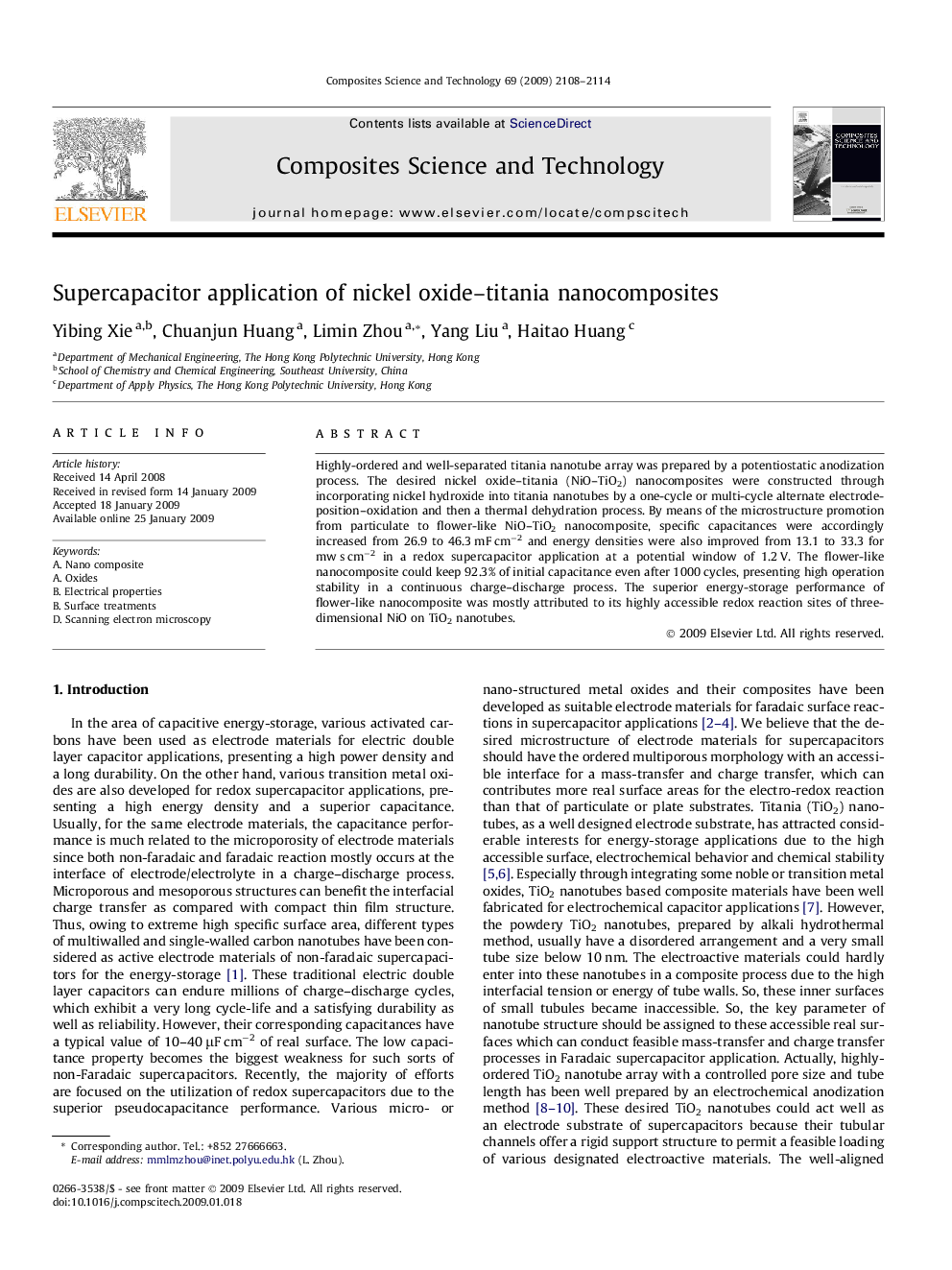| Article ID | Journal | Published Year | Pages | File Type |
|---|---|---|---|---|
| 821476 | Composites Science and Technology | 2009 | 7 Pages |
Highly-ordered and well-separated titania nanotube array was prepared by a potentiostatic anodization process. The desired nickel oxide–titania (NiO–TiO2) nanocomposites were constructed through incorporating nickel hydroxide into titania nanotubes by a one-cycle or multi-cycle alternate electrodeposition–oxidation and then a thermal dehydration process. By means of the microstructure promotion from particulate to flower-like NiO–TiO2 nanocomposite, specific capacitances were accordingly increased from 26.9 to 46.3 mF cm−2 and energy densities were also improved from 13.1 to 33.3 for mw s cm−2 in a redox supercapacitor application at a potential window of 1.2 V. The flower-like nanocomposite could keep 92.3% of initial capacitance even after 1000 cycles, presenting high operation stability in a continuous charge–discharge process. The superior energy-storage performance of flower-like nanocomposite was mostly attributed to its highly accessible redox reaction sites of three-dimensional NiO on TiO2 nanotubes.
